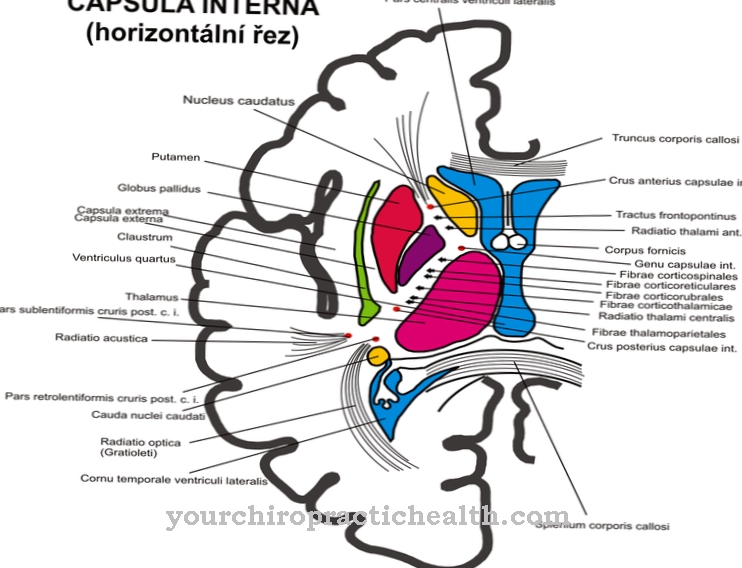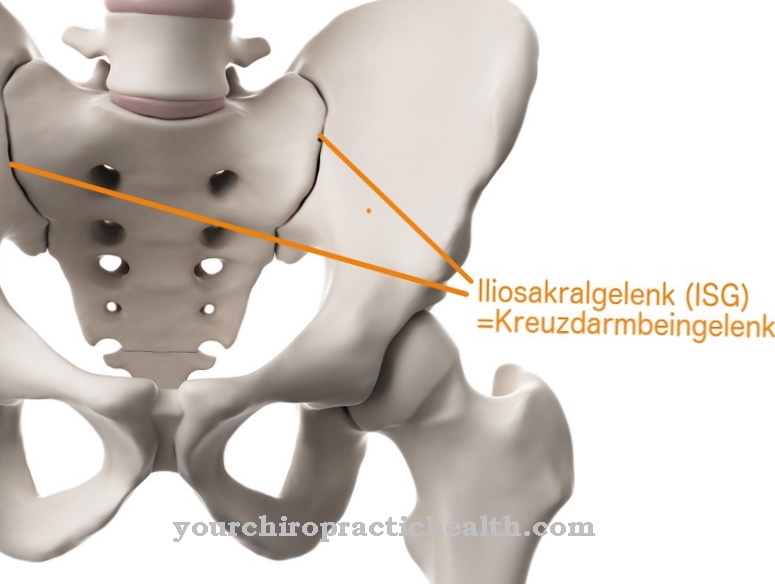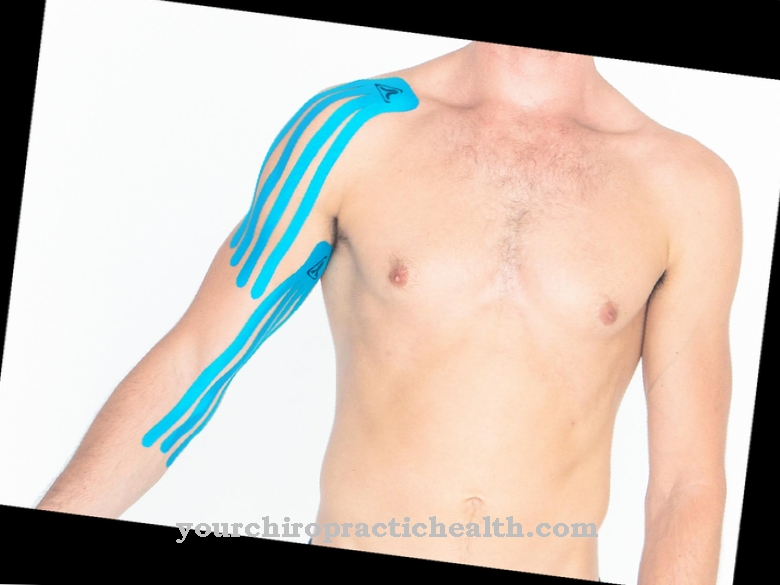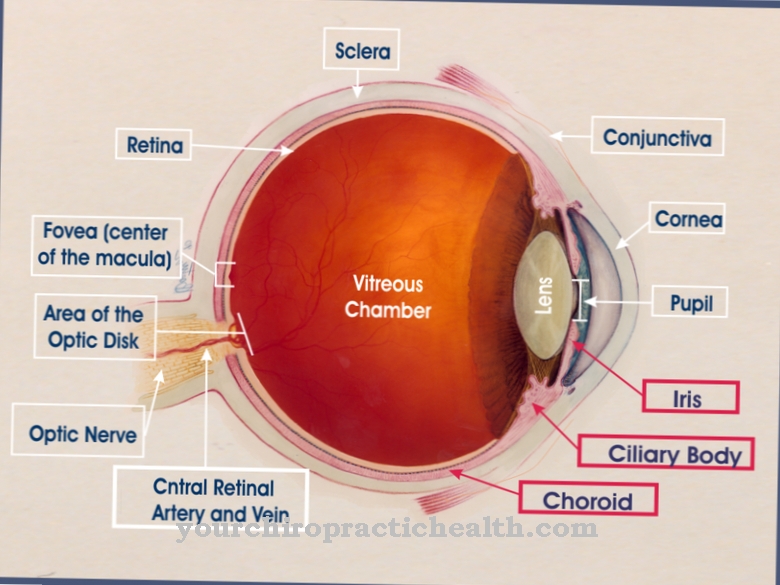To the Soft tissues include all soft tissues with the exception of epithelia, internal organs and glial tissue. Thus, fatty tissue, muscle tissue and connective tissue belong to the soft tissues.
What is the soft tissue?
Tissue is a collection of differentiated cells including their extracellular matrix. Soft tissue usually consists of collagen, elastin and a basic substance. Because of this special structure, soft tissue can easily deform and then return to its original shape.
Soft tissues are also viscoelastic. So you have both an elastic and a viscous material behavior. They are also incompressible. This means that they do not change their volume even under the action of pressure at a constant temperature. So they cannot be compressed. Another property of soft tissues is anisotropy. Soft tissue is found in many parts of the body. For example, muscle tissue, connective tissue, and adipose tissue are soft tissues.
Anatomy & structure
Adipose tissue is made up of adipocytes. These are quite large cells, the cell body of which is filled with a thick drop of lipid. The adipocytes are therefore also referred to as univacuolar fat cells. The cell nucleus is pressed to the edge by the thick fat vacuole.
Cell organelles or cell fluid are not recognizable due to the fat filling of the cell. The fat vacuole is free in the cell fluid. The individual adipocytes are built into a fiber structure and surrounded by a basal lamina and reticular fibers. These fibers keep the fat cells in shape even when force is applied. A distinction can be made between yellow and white fat.
The muscle tissue is divided into skeletal muscles, heart muscles and smooth muscles. Skeletal muscles consist of several muscle fiber bundles, which in turn consist of individual muscle fibers. The individual muscle fibers can be up to 15 centimeters long. They are covered by connective tissue, the so-called fascia. The individual skeletal muscle in its entirety is also surrounded by connective tissue. From this septa run into the interior of the muscle. Each muscle fiber is made up of thousands of myofibrils. These pull through the muscle fibers and are in turn made up of smaller units, the myofilaments.
The myofilaments are arranged in sarcomeres. This arrangement makes the skeletal muscles appear striated under the microscope. It is therefore also known as striated muscles. The smooth muscles can be distinguished from the striated muscles. In contrast to the striated muscles, there is no regular arrangement of the myofibrils in the smooth muscles. The smooth muscles are mainly made up of actin and myosin filaments. The heart muscle is made up of a special type of muscle. These are striated muscles that cannot be consciously controlled.
The term connective tissue encompasses various types of tissue, all of which contain comparatively few cells. Instead, the connective tissue contains all the more intercellular mass. Various fibers are embedded in the intercellular substance. The main part is made up of collagens. These form a dense meshwork. The space between the collagen fibers is filled by proteoglycans.
Function & tasks
The tasks and functions of soft tissue differ depending on the type of tissue. The smooth muscles are responsible for the movements of the organs. For example, it is an important part of digestion or breathing. The smooth muscles work slowly and persistently and function completely independently of human will.
The striated muscles can be influenced at will. It forms more than 400 different skeletal muscles. These allow different movements. Several muscles are often involved in a movement. The skeletal muscles work quickly, but tire more easily. The heart muscles occupy a special position. Although it is striated across, it cannot be influenced arbitrarily. The heart muscles ensure the contraction of the heart and thus the expulsion of blood into the circulation. It thus enables the body to be supplied with blood.
Adipose tissue can perform various tasks. The building fat serves as padding for the organs in the fatty bodies and also acts as a shifting layer. The storage fat is used to store the energy from food. While white and yellow adipose tissue form the storage fat, the brown adipose tissue is used to generate heat.
The connective tissue can also take on various functions. Depending on its occurrence, it protects and surrounds organs, acts like the fatty tissue as a sliding and shifting layer or serves as a guide structure for conduction pathways. It is also involved in the production and storage of various substances. It also serves as a support structure for the body.
Diseases
Various diseases can occur depending on the soft tissue. The term collagenoses is used to summarize diseases in which the immune system is directed against the body's own connective tissue.
Collagenoses include, for example, Sjögren's syndrome, scleroderma, systemic lupus erythematosus and polymyositis. The appearance of collagenoses varies from disease to disease. For example, Sjogren's syndrome manifests itself through dry eyes, a dry mouth and decreased tear fluid. In scleroderma, on the other hand, the connective tissue hardens, resulting in a facial rigidity and a reduction in the size of the mouth opening.
Lipedema is a very common disease of adipose tissue. In this condition, fatty tissue accumulates on the sides of the thighs and hips. The upper arms, lower legs and neck can also be affected by the atypical, symmetrical accumulation of fat. The swelling is accompanied by pain, tenderness and a tendency to bruises. Lipedema almost exclusively affects women.



























